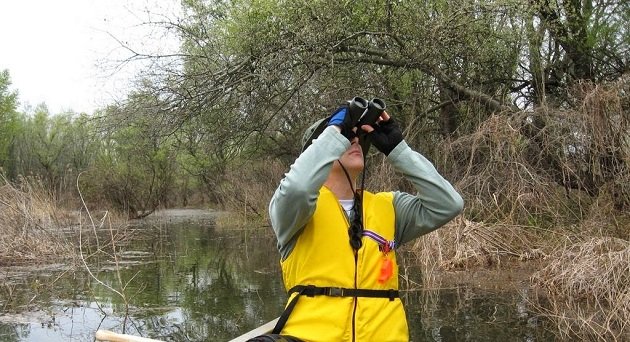
I started to bird from a kayak. Paddling around the Veliko Ratno Island Reserve in almost downtown Belgrade was such a liberating experience of getting close to nature while not having to travel far or invest much. My kayak club had boats for novices and after some rounded, white water banana hull that was recommended to me for its stability, I opted for a straighter, touring v-shaped hull that tracks well inside a river current. Or currents, because the island, that evaded development by the sheer stroke of luck, combined with the Danube water levels going 7 metres up and down, lies at the confluence of two rivers and further swirls their currents. (In order to understand the nature of the river, which created my experiences and advice such as they are, think of the lower Mississippi.)
Flat water racers aside, I tried just about any model my club had, including white water slalom and downriver racing hulls. The trick is, no hull does everything you want and improving one variable means loosing another. Like in life, there is no middle ground.
Very shallow and short slalom kayaks are good if you want to explore backwaters, paddling through inundated riparian forests, left and right around the trees, or below low branches of half fallen, rotting trunks hollowed by woodpeckers. What makes such exploration uncomfortable is that long double-bladed kayak paddle that gets entangled in the branches around you. Recommendation? Opt for a detachable two or three-piece paddle for folding kayaks, so once deep in the backwaters, you can shorten it (make sure you have deck lines to secure the rest of your paddle under them).
But, inside wider river arms or the main river channel, you will want something that tracks well. For a while, I birded from the least birdable white water racer, the one with those flares behind the cockpit. It tracks well going straight, but is slow to turn and unlike the slalom hull, rather unstable if it isn’t moving. And when you spot a bird, you stop paddling and reach for binoculars. In order to avoid binocs banging against the cockpit, I wore them high on my chest on a short strap, something that became a habit and I always do it, on the water or not.
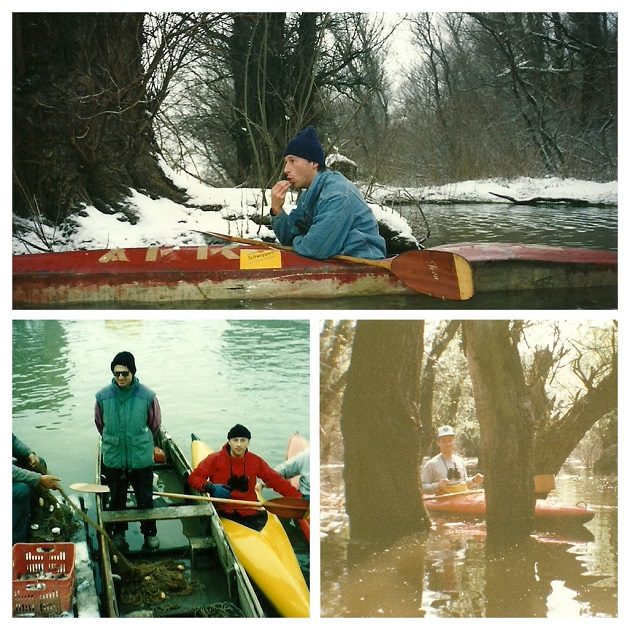 Belgrade, 1990s
Belgrade, 1990s
Back to spotting a bird. You are paddling, see some movement inside that willow crown, and holding your paddle in one arm, reach for binoculars. That IS the way to do it. Many times I would put the paddle across the front deck to hold binoculars with both hands. Invariably, within a few seconds the paddle would roll off into the water, so, looking like an utter fool, I was forced to paddle with my hands to reach it. If you are using some more stable kayak, you may avoid this with a paddle line attached to your boat by karabiner, something commonly used on sea kayaks where losing your paddle would spell a disaster.
But, remember, I was in a WW racing hull, straight and narrow as a cigarette. And with the stability of a bicycle: as long as it moves forward, it is stable. The faster it moves; the more stable it is. But once you stop paddling and reach for binoculars, it stops moving and starts rolling from one side to another. And you want steady hands for your binocs! Give up on the idea of holding your binoculars with both hands and chose a lighter model that you can hold steady in just one arm because you need the other arm to perform a sort of a low brace, pressing one end of the paddle against the front deck and holding the other 90 degrees from it, pressing the blade horizontally against the water. It actually works, giving you just enough stability to catch the stare of that eagle flying above you (I was so proud once when from such a position I established eye contact with a White-tailed Eagle).
Since I already mentioned binoculars, beside a lighter model, opt for smaller magnification and wider field of view, so you won’t have to focus too long. One more characteristic comes to mind: once I paddled through the flooded bushes; it was late April and all insects and centipedes were there, hiding from high waters even higher in thin branches. The same branches I shook onto me, having a veritable insectfall all over (fortunately, I had a wider brimmed hat which prevented any of them falling inside my shirt). Once I was on the open water, I wanted to at least wash them off my deck. And grabbed a blade-full of water, 90 degrees to my kayak, and splashed my deck. Good, but some stayed on.
Now, moving your blade through the water laterally towards you hull is a disaster in the making and the very first “don’t” advice that you will hear from experienced paddlers. I heard it, all right. But it wasn’t in my mind at the moment. With the first paddle stroke I was just lucky.
When I repeated it, I did exactly what that stroke is meant to do – capsize the kayak (yet, I washed the remaining centipedes away). I had to swim a dozen metres to the shore, with binoculars around my neck. It was a cheap, beginners pair, certainly not waterproof, and in a day or two, I had green algae growing all over the prisms. So, when choosing your binoculars, consider only extremes: either a cheap pair that you can easily replace, or a very good waterproof one.
One common and unavoidable problem when birding from a kayak is, when you stop paddling, it doesn’t stop in its tracks – it is not a car. It continues moving, but not straight, as you might wish for, but starts veering to a side opposite to your last stroke. Your bird, at first in front of you, becomes one at the flank and soon to become the one behind you! And you cannot turn your neck owl-style. In a more stable boat where you do not need a low brace, grab your binoculars with one hand and with the other lower your paddle blade into water, steering straight as much as you can, giving yourself more observation time.
Hence, the best birding kayak – from my experience – is a shorter day-touring model, short enough to be maneuverable and straight enough to keep track well.
Yet, most rental fleets these days offer sit on tops as opposed to classic sit inside kayaks. And most sit on tops come with some sort of a double hull, catamaran shaped bottom, to both increase tracking and stability, while being short-hulled provides a good amount of maneuverability. As a concept, in theory it sounds good for birding purposes, but I haven’t tried it myself and cannot comment on it.
I always take notes of my birds. No birding is complete without a notebook. And, unlike the single-bladed canoe paddle, with a double paddle one blade always goes up and water from it leaks down onto your fingers. Which are always wet. Making the notebook paper wet as well. Some pens leave no trace on wet paper – consider pencils.
Also, consider more expensive notebooks with thicker, smoother and less absorbent paper. The very best choice, so far, turned out to be a notebook of waterproof paper, acquired in some army shop (another idea I had, but never tested, was using a waterproof marker on a plastic foil duct-taped onto a deck). In my early days I used to carry a field guide with me (I still do, but not on the water, not any more). The moist pages become wavy, even more so after many a hair dryer treatment afterwards. I have no idea how to improve that; but using the bird ID app on your phone. Still, it is cheaper to replace a soaked book than a soaked phone.
You may be the next generation birder, leaving paper behind and using the eBird app on your phone. The phone that claims to be rain resistant, but are you resistant to test that claim? There is a wide range of transparent, waterproof neck pouches made specifically for canoeists, but despite having one, I have never tried it and cannot comment on that option.
Did I mention that a silent boat allows you to approach many birds much closer than otherwise? The bird may see you as just an odd floating stump, or a frightening maniac. The difference is in your paddle. Frantic paddling to get closer will scare them away. Try not to use you paddle near the birds, just to sit calmly and let the river take you closer.
As you probably noticed, I am not dealing here with waves, nor the white water – in such conditions you cannot bird from the water. On flat water, the most dangerous thing is the traffic, never forget to check for barge trains ahead or behind you every now and then. Like you, they have no brakes either, but are much bigger.
Finally, a buoyancy aid, or a PFD (personal flotation device) is a fine thing in cold weather, but in hot summer days, I choose not to wear it. Still, that’s only me. In many states the law says you have to wear it. So, what type of a PFD?
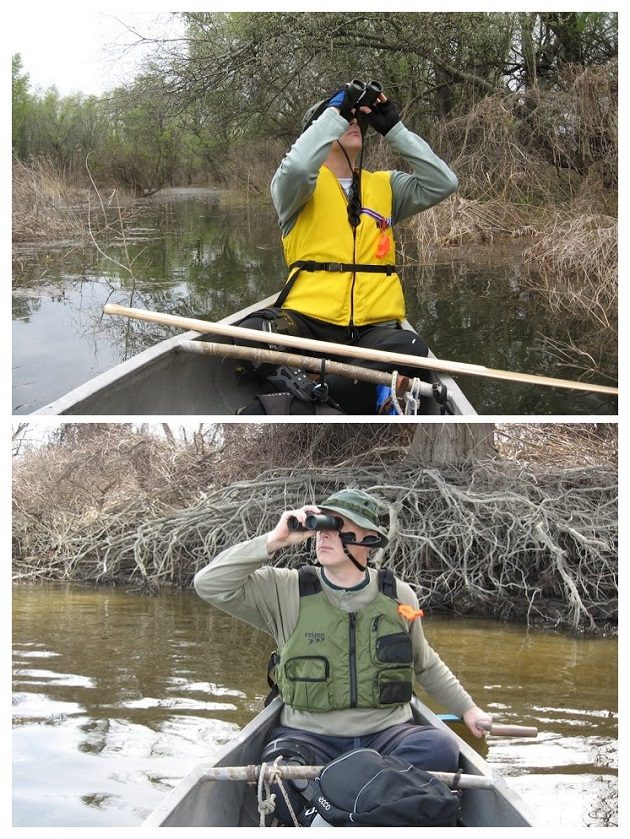
I used two types, a more traditional longer vest, which I find more comfortable to wear, and it also warms you up on winter days. Yet, traditional models have no pockets. The logic behind this is, if you capsize, the pockets would fill up with water, causing the vest to lose part of it buoyancy. I always hated the lack of pockets – I never knew where to keep my notebook (without a spray-skirt, the most logical place – in my lap is prone to water dripping from the paddle).
So, I acquired a new PFD, a multi-pocket kayak fishing vest. These pockets are edged with netting, allowing for water to seep out, and I finally got a place for a pen and a notebook (and a special phone pocket, too). That is practical, although I never got used to this short-vest style, it simply doesn’t fit the anatomy, my body is much longer. In a way, it is more of a multi-pocket bra than a vest?!?
You will notice that in most of these photos I am clearly not in a kayak, but an open Canadian canoe. As luck would have it, I have very few photos birding from a kayak, and in recent years, I mostly do it from a canoe. Which I find more comfortable. But that is another story.
More: my kayak birding experiences from Botswana (with, I cannot believe it, 35 k readers so far)


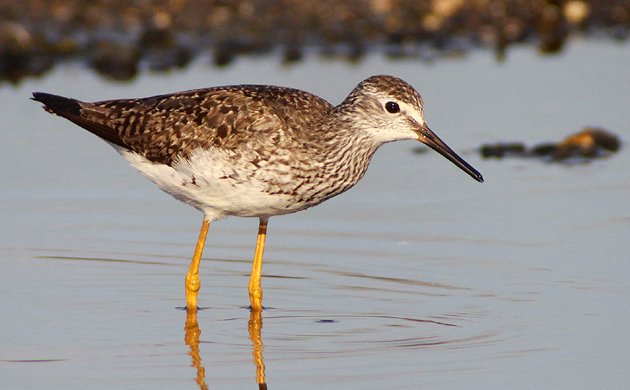
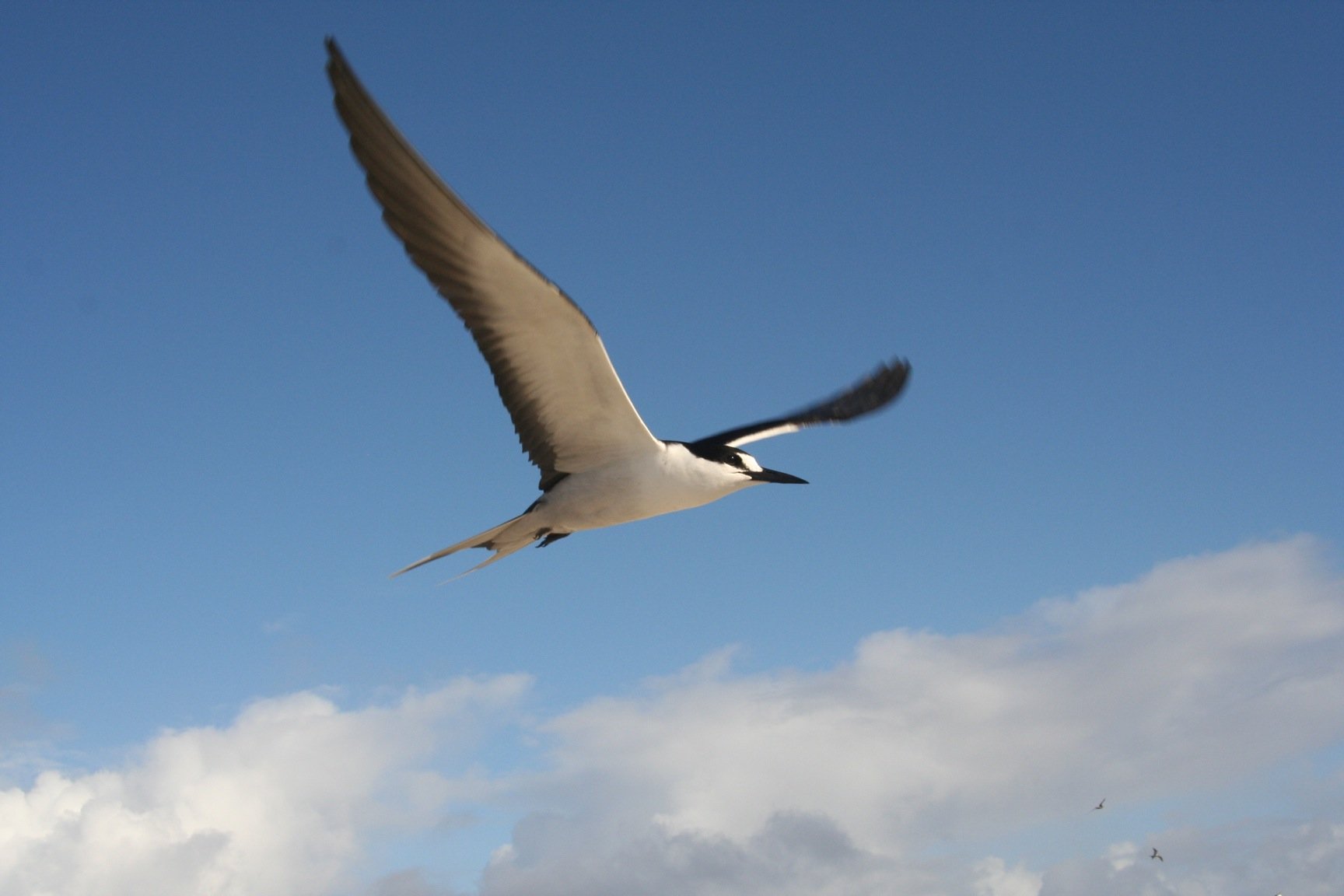
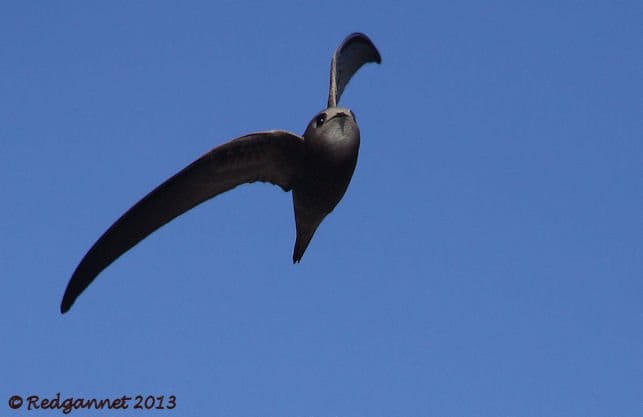

 New writers welcome – please contact us for details.
New writers welcome – please contact us for details.

















Leave a Comment